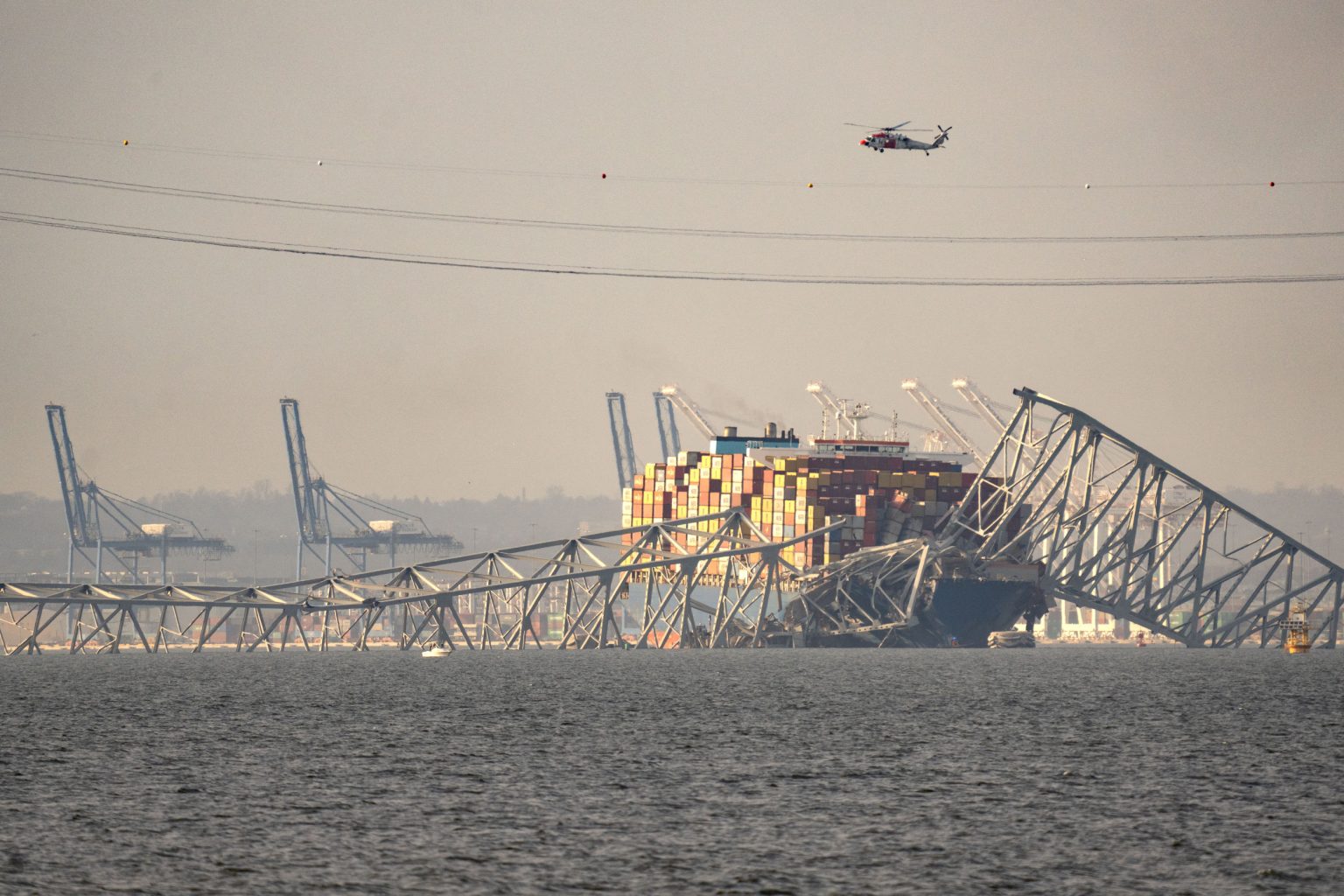Officials made the decision to suspend search and rescue operations for the remaining construction workers who have not been found after Baltimore’s Francis Scott Key Bridge collapsed early Tuesday morning. U.S. Coast Guard officials announced during a press briefing that they are transitioning their operation to a recovery phase to locate the six missing individuals, stating that they do not believe any of them are still alive. The collapse occurred around 1:30 a.m. ET after a freighter ship departing from Baltimore’s Inner Harbor lost power and collided with the bridge. Eight construction workers were on the bridge at the time, two of whom have been located so far.
Part of the steel frame of the Francis Scott Key Bridge ended up on top of the container ship Dali after the collapse in Baltimore, Maryland on March 26, 2024. The bridge collapsed after being struck by the Singapore-flagged Dali container ship, resulting in multiple vehicles and individuals falling into the frigid harbor below. As this is a developing news story, updates will be provided as more information becomes available. Newsweek is committed to challenging conventional wisdom and seeking connections in the pursuit of common ground.
The Francis Scott Key Bridge collapse has brought tragedy to Baltimore, with construction workers losing their lives and others still unaccounted for. The swift and catastrophic nature of the collapse has prompted officials to shift their focus to recovery efforts. The incident serves as a stark reminder of the risks and dangers involved in construction work, especially in situations where maritime traffic intersects with infrastructure.
The impact of the collapse extends beyond the immediate loss of life and disruption to transportation routes. The investigation into the causes of the incident will likely involve multiple agencies and experts to determine what led to the bridge’s failure. Ensuring accountability and implementing measures to prevent similar tragedies in the future will be crucial steps in the aftermath of the collapse. The community in Baltimore and beyond will be seeking answers and reassurances regarding the safety and reliability of infrastructure projects.
As the recovery phase progresses, the focus will be on locating the remaining missing individuals and providing closure to their families and loved ones. The recovery efforts will involve specialized teams and equipment to navigate the debris and challenging conditions in the water. The resilience and coordination of first responders and officials in the face of such a devastating event will be crucial in the days and weeks ahead. The support and solidarity of the community will also play a significant role in the recovery and healing process.
In the midst of tragedy, the Francis Scott Key Bridge collapse highlights the importance of preparedness, safety protocols, and ongoing maintenance of critical infrastructure. As the investigation unfolds and the recovery efforts continue, lessons will be learned and changes may be implemented to prevent similar incidents in the future. The impact of the collapse will be felt by the affected families, the city of Baltimore, and the broader public as questions are raised about the oversight and regulation of infrastructure projects. The road to recovery will be long and challenging, but through unity and determination, the community can work towards healing and rebuilding in the wake of this devastating event.


